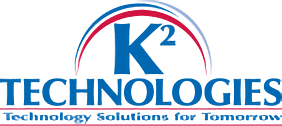
Businesses owners need to know important dates for personal and corporate tax filings with protection plans from any tax-related identity theft. Knowing how income is produced is smart for business leaders and the generation of income also goes with a reporting process. The income produced may be posted to personal tax returns and the best planning of generated income will go smartly with the protection of personal credit and finances. In 2016, $21 billion in tax refunds was stolen from the American population as a result of identity theft. Protection of assets, profits, employee records, and income are smart areas of focus for business leaders. What are the best ways to avoid tax-related identity theft? A priority for management is to protect company profits and personal data such as Social Security Numbers. Implementing the best procedures for employees and tax reporting is helpful with worker compensation reporting and considerations for any independent contractors. Correct planning throughout all of this can help you avoid any tax identify theft as another part of effective leadership.
High-Level Reviews for Companies and Business Leaders
Organizing your corporate books and reporting throughout the year can help you float easier through tax season with filing dates and proactive planning for the reporting process. A review of the business structure may be part of an evaluation for a company and business leaders. The business structure may determine the type of tax returns being filed. Working with an attorney or a CPA is a smart way of being prepared to discuss the appropriate business structure that works best for a company. Growth plans, employee numbers, income allocations, and tax reporting are considerations for some business leaders. Profit projections with possible international growth plans are additional considerations for some businesses and the structure should support the best ways to operate a business with protection and risk mitigation. Technology solutions should support the best corporate structure with management reporting and accounting procedures. Tax identity theft is avoided throughout the payroll process and the costs to reduce all risks can be simplified with smart planning and policies.
How does a business protect personal credit and finances?
Appropriate planning to calculate taxes, file returns, and make payments if necessary can help you avoid penalties and interest costs. Plans should include smart procedures for protecting personal data. Protection may consist of a thorough review to make sure there are no unauthorized loans, credit cards or other amounts using a false identity. Eliminating risks includes protection to ensure there is no need to freeze credit when tax-related identity theft occurs. Closely monitoring credit card charges, user accounts, and personal information is a smart choice for reducing any risks of tax-identity theft involved with a business. Two areas of focus will help reduce risks:
- Employee record keeping and protection of personal data
- Tax Reporting and protecting personal data from tax-identity fraud
Preparations include plans to know how technology is an answer to feeling confident about filing during tax season and steps to take for employee data protection. Business executives understand planning and organizing for operations, sales, and technology implementations. Technology reviews are important for data protection and security planning is smart business.
Protection Planning and Important Tax Dates
When is protection planning important for personal data such as Social Security Numbers? Business leaders that are preparing smartly for tax season also know to have policies and procedures to support protection of personal data for all employees. Technology systems, such as accounting and payroll software, should be checked often to eliminate any security breaches or digital data hacks. Also, the process of employee withholdings and reporting payments made to independent contractors are considerations with protection and tax dates. The following are some dates to consider for tax reasons.
- January 31, 2019 is a deadline for sending out W-2 for your employees and filing with the IRS.
- February 15th, 2019 is the deadline for issuing 1099s to independent contractors that received payments in 2018.
- February 28, 2019 is important for businesses filing reports on 1099s for 2018.
- April 1, 2019 is a date to know for filing 1099s electronically. If you are not filing electronically, the deadline is February 28th.
Knowing the 2019 tax dates can help you plan ahead and minimize the risk of any fraud or tax-identity issues. Data protection makes sure no thieves are filing fraudulent returns before the real taxpayers file their legitimate ones. Business executives can be applauded and look prepared when communication of risk prevention strategies are confirmed as optimized. The tax planning process may include work with a CPA or accounting firm. Confirming the due dates for the year is smart planning and having enough lead-time to file the tax documents should also include proactive procedures to protect credit and finances.
Payroll, Systems, and Processes
Payroll can be part of the reporting and tax planning. A planned out system to process payroll efficiently can help with tax reporting. Tax tables and employee records are part of the planning process with considerations, such as salaries, hourly rates, benefit payments, and tax withholdings. Companies with employees in multiple states may have different withholdings for taxes. Also, income withholdings for city and local taxes may be part of calculating gross and net pay. For many reasons, some companies choose to save costs and time by outsourcing payroll functions to a third party firm. The benefits of proper planning can be to develop better processes for making estimated quarterly tax payments. Important considerations include hiring and paying full-time employees and independent contractors. Organizing the best way can save money and time for busy company executives and managers. Correct planning may help with payroll processing, tax reporting, and determining the best technology solutions for business. Protection of your employee personal data should be a priority with communication to any involved third-party firms.
Eliminate expenses and time wasters of being forced into working with creditors and credit reporting agencies to clear any fraudulent activity and tax-related identity theft. Employee personal data should also be protected with a smart focus and strength as an employer. Victims of tax-identity theft may need to report it to both the IRS and the Federal Trade Commission. Other suggestions outlined in this guide https://www.thesimpledollar.com/protect-yourself-from-tax-identity-theft/ include applying for an identity protection PIN, a six-digit IRS number that will be used to confirm identity on all filings and tax returns. Employers should consider important policies for the protection of employee data. Business executives should understand the protection of credit and finances, and know how this applies to best practices throughout the organization. Tax-related identity theft should never trace back to a business that has smartly focused on data security plans.

 Mon-Fri 9 AM to 5 PM Mountain
Mon-Fri 9 AM to 5 PM Mountain 888-686-3025
888-686-3025



